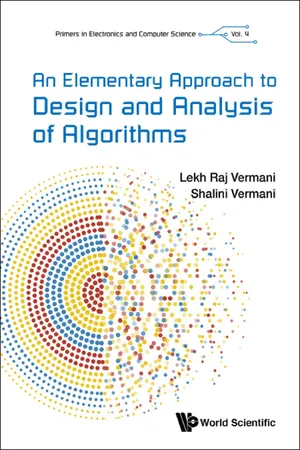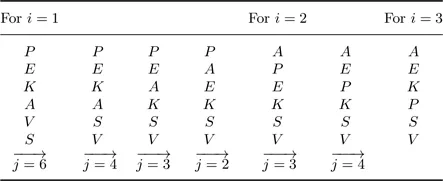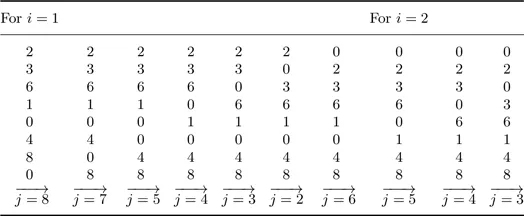
An Elementary Approach to Design and Analysis of Algorithms
- 536 pages
- English
- ePUB (mobile friendly)
- Available on iOS & Android
An Elementary Approach to Design and Analysis of Algorithms
About this book
In computer science, an algorithm is an unambiguous specification of how to solve a class of problems. Algorithms can perform calculation, data processing and automated reasoning tasks.
As an effective method, an algorithm can be expressed within a finite amount of space and time and in a well-defined formal language for calculating a function. Starting from an initial state and initial input (perhaps empty), the instructions describe a computation that, when executed, proceeds through a finite number of well-defined successive states, eventually producing 'output' and terminating at a final ending state. The transition from one state to the next is not necessarily deterministic; some algorithms, known as randomized algorithms, incorporate random input.
This book introduces a set of concepts in solving problems computationally such as Growth of Functions; Backtracking; Divide and Conquer; Greedy Algorithms; Dynamic Programming; Elementary Graph Algorithms; Minimal Spanning Tree; Single-Source Shortest Paths; All Pairs Shortest Paths; Flow Networks; Polynomial Multiplication, to ways of solving NP-Complete Problems, supported with comprehensive, and detailed problems and solutions, making it an ideal resource to those studying computer science, computer engineering and information technology.
Contents:
- Preface
- About the Authors
- Algorithms
- Growth of Functions
- Backtracking
- Divide and Conquer
- Greedy Algorithms
- Dynamic Programming
- Elementary Graph Algorithms
- Minimal Spanning Tree
- Single-Source Shortest Paths
- All Pairs Shortest Paths
- Flow Networks
- Polynomial Multiplication, FFT and DFT
- String Matching
- Sorting Networks
- NP-Complete Problems
- Bibliography
- Index
Readership: Students studying for degrees in computer science, computer engineering and information technology.Algorithms;Computer Science;Computer Engineering;Information Technology00
Frequently asked questions
- Essential is ideal for learners and professionals who enjoy exploring a wide range of subjects. Access the Essential Library with 800,000+ trusted titles and best-sellers across business, personal growth, and the humanities. Includes unlimited reading time and Standard Read Aloud voice.
- Complete: Perfect for advanced learners and researchers needing full, unrestricted access. Unlock 1.4M+ books across hundreds of subjects, including academic and specialized titles. The Complete Plan also includes advanced features like Premium Read Aloud and Research Assistant.
Please note we cannot support devices running on iOS 13 and Android 7 or earlier. Learn more about using the app.
Information
Chapter 1
Algorithms
1.1.Some Sorting Algorithms

1.1.1.Bubble sort





Table of contents
- Cover
- Halftitle
- Series Editors
- Title
- Copyright
- Dedication
- Preface
- Authors
- Contents
- Chapter 1. Algorithms
- Chapter 2. Growth of Functions
- Chapter 3. Backtracking
- Chapter 4. Divide and Conquer
- Chapter 5. Greedy Algorithms
- Chapter 6. Dynamic Programming
- Chapter 7. Elementary Graph Algorithms
- Chapter 8. Minimal Spanning Tree
- Chapter 9. Single-Source Shortest Paths
- Chapter 10. All Pairs Shortest Paths
- Chapter 11. Flow Networks
- Chapter 12. Polynomial Multiplication, FFT and DFT
- Chapter 13. String Matching
- Chapter 14. Sorting Networks
- Chapter 15. NP-Complete Problems
- Bibliography
- Index